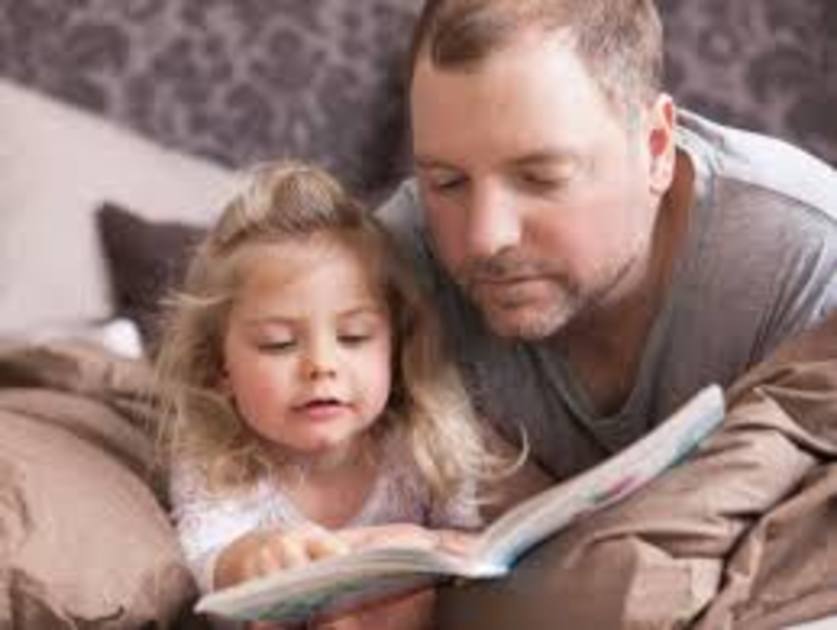
Today’s world is jam-packed with information via a constant and steady barrage on our technological devices that surround and accompany us everywhere we go. Our children, as well, are in the same predicament. PBS Kids, for example, offers an endless stream of programs designed to entertain and educate children practically from infancy. Using color and movement, these programs fascinate young viewers, regardless of whether or not they understand the themes or words being spouted in the storyline. One of the many problems that arises from constant technological influence, especially for children, is the issue of sensory overload, and the inability to process this overload appropriately.
The Trouble with Bedtime
By the end of a long day, young children are exhausted–but they can also be hyper and wired from their day, from their thoughts, and from the barrage of information they have seen, heard, and absorbed. Many children, though they may be exhausted, cannot process all this without help, which creates a problem: You, the parent, have had a similar day with the same overload–albeit on an adult level–and that prevents you from having the patience or energy that is needed to help your children go peacefully to sleep.
Very few children can get into bed immediately and fall asleep on their own. Typical pre-sleep behaviors include telling stories, infamous calls for additional cups of water, and the ubiquitous “I’m scared,” whether of the dark, of the shadows on the wall, or from something that was overheard or encountered during their day. It’s important to realize that children process what they hear according to their own limited experience or understanding of words, and this can sometimes translate into unrealistic or untrue scenarios that they simply misconstrued. One first grader insisted to his grandmother that “the bad guys are coming and they are going to get us in this house!” based on what he heard in school. All his grandmother’s explanations that this was not going to happen fell on deaf ears, until the source of this fear was revealed: His school buddy heard news reports of a hacking problem and that “the hackers were coming and everyone’s computer was at risk.” It took a while for the boy to accept that the hackers could not actually come out of the computer.
Guiding Our Children
Once we understand and accept the source of our children’s inability to fall asleep, there are several things we can do to help them. One idea is to establish a familiar pre-bedtime routine that enables physical activity to wind down. This can include an orderly pattern of going to the bathroom, brushing teeth, drinking water, reading a soothing children’s story, and then saying “good night”s and “I love you”s. It can also be helpful to use visualization and guided imagery, just before the child davens or says prayers (in homes that do so): Have your child visualize a calming place where they safe, like a lake, beach, hiking area or a favorite park; saying her prayers while she visualizes being in that atmosphere creates a peaceful motif. Of course, there is always that child who thinks a bit outside the box; one dynamic four-year-old girl likes to think of her grandparents having a pizza and ice cream party with her in her room every night so they can hear her tefillot and keep her company while she sleeps. Allow children to use their imagination and take ownership over their imagery. It is their vision–you are simply guiding them in the right direction.
As a result of helping children choose a quiet and peaceful place instead of anxiously and hurriedly sending them off to sleep for the night, parents can also reduce their own tensions by visiting the soothing spot with their children. This way of guiding images can be an unexpected bonus that turns into a special way to end the day that you can share with your child. You can even try it for yourself with your own guided imagery to help you relax.
Once you gain awareness, you have a choice of whether or not to resume the bedtime frustrations or find a way to keep them from bombarding you all over again. Guided imagery is a simple and effective way of helping children to relax and wind down. A number of books for both children and adults are available as well that can that can assist the whole family in visualizing being in a safe and pleasant environment, and thus, in falling asleep peacefully.
Marlene Greenspan, MA, LPC, is currently in private practice and is the director of Counseling for Better Living. For many years, Marlene Greenspan has created social skills programs, written weekly Counseling Corner articles, given workshops, taught classes, and published journal articles for professional organizations such as NEFESH, ACA, ASCA, and the OU. She also has EMDR and Ericksonian Hypnosis training. Marlene can be reached at: counselingforbetterliving@gmail.com. Visit her Blog: www.counselingforbetterliving.com.
 Previous
Previous

